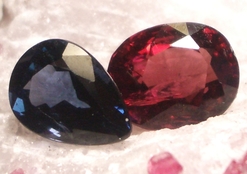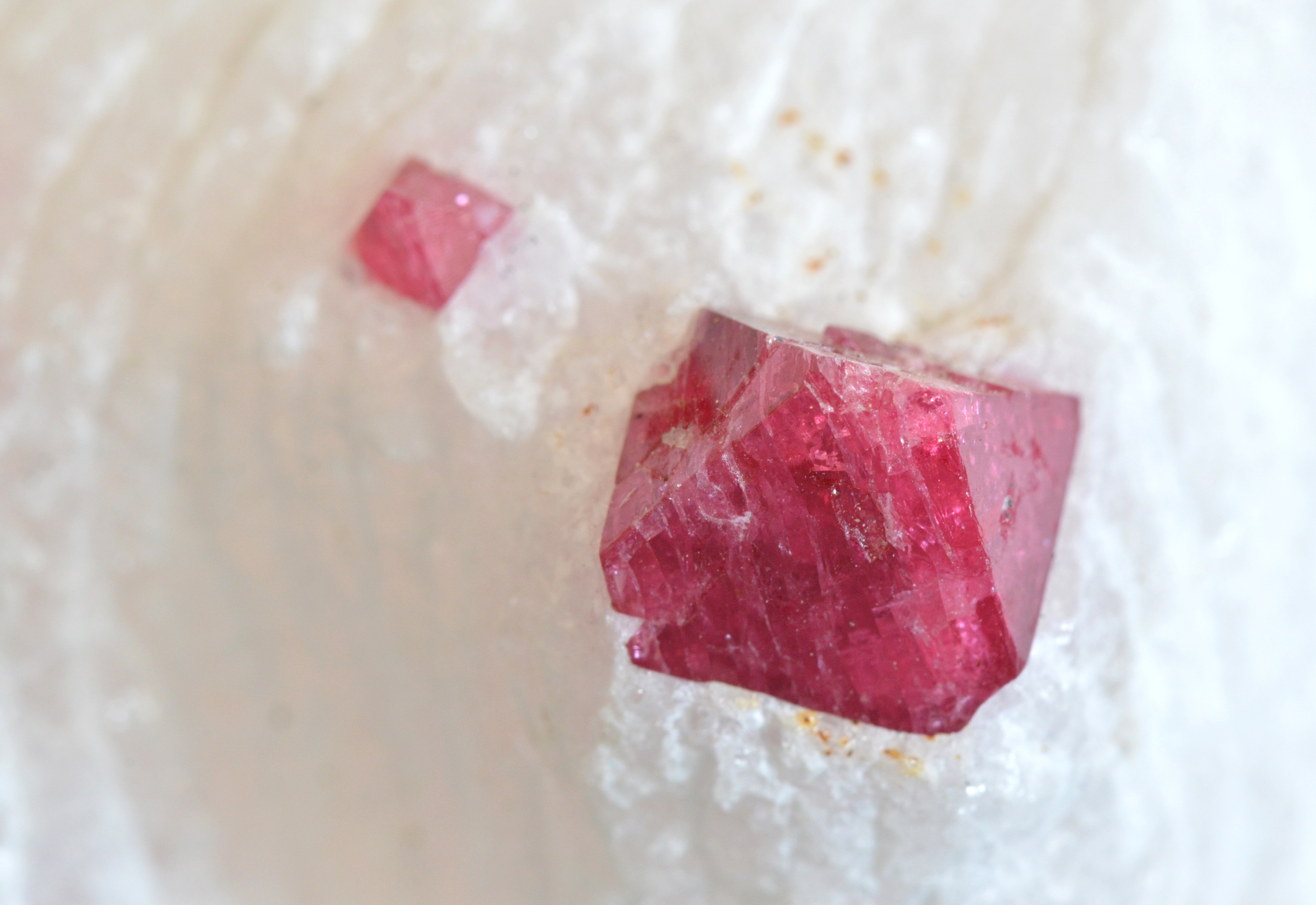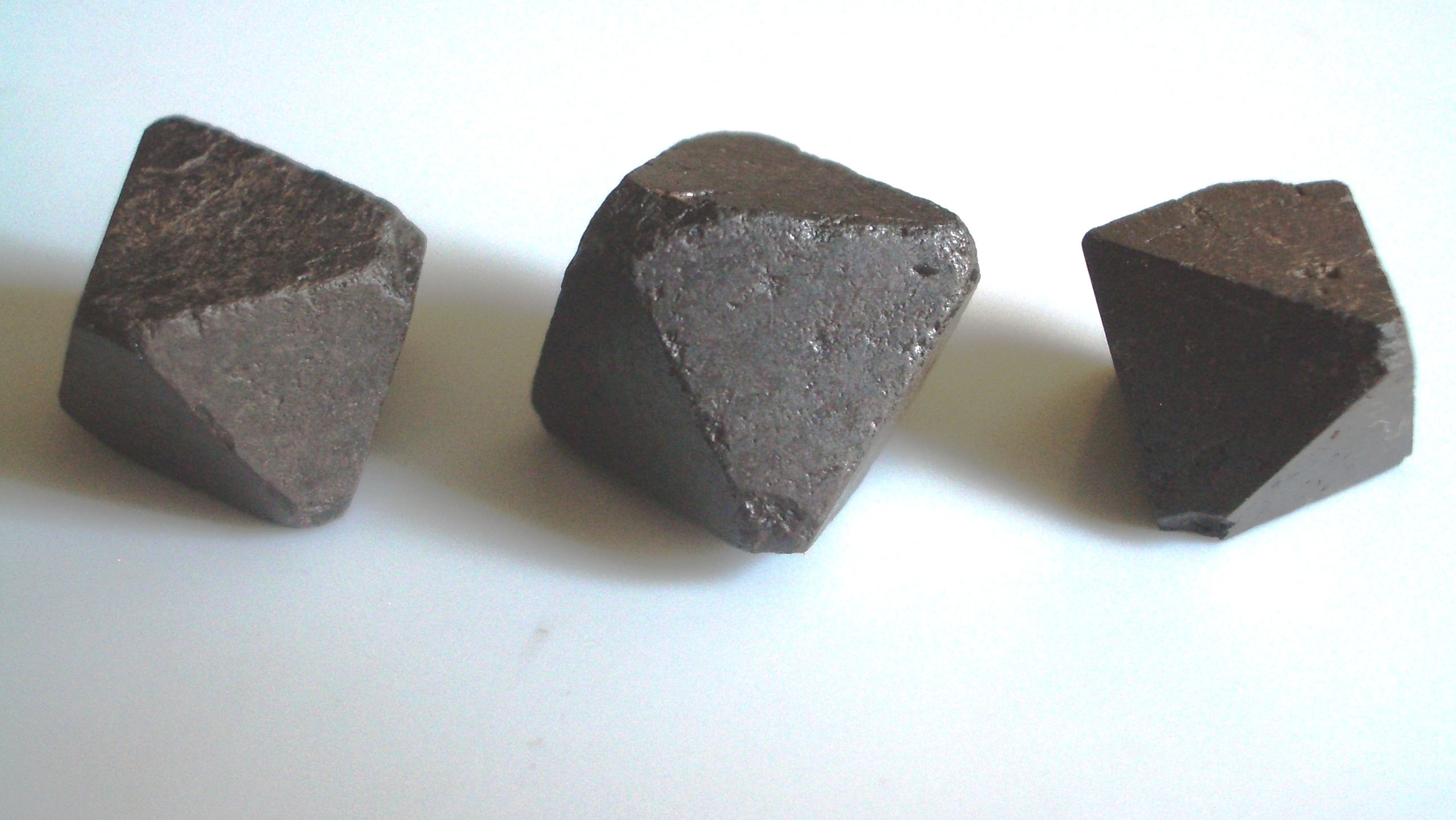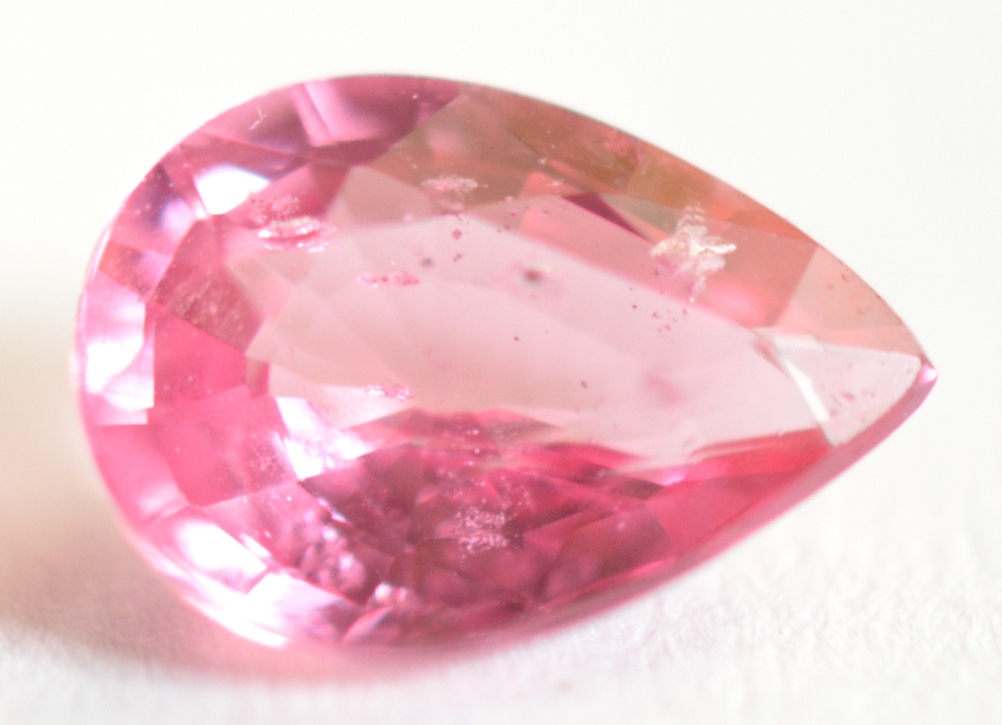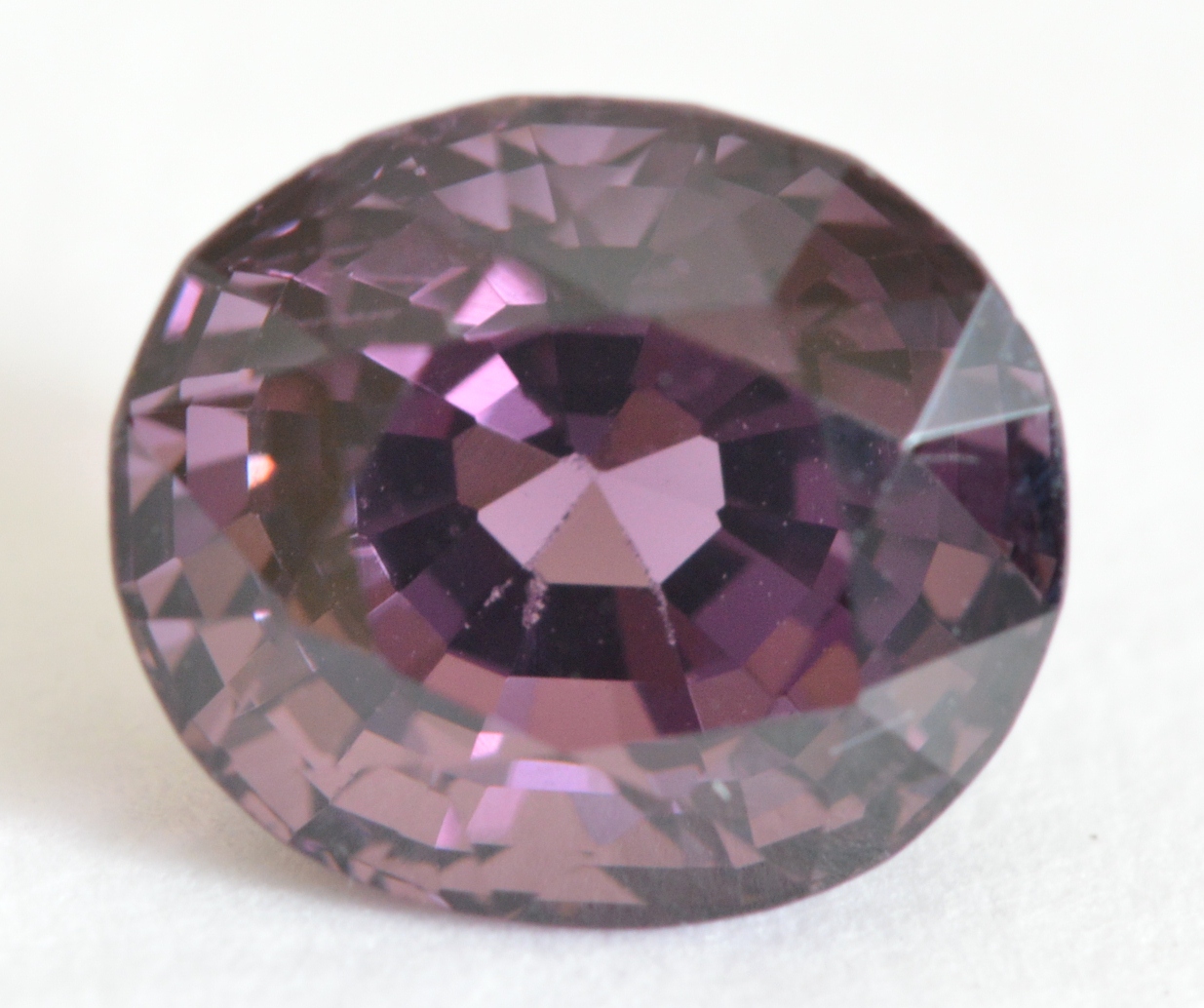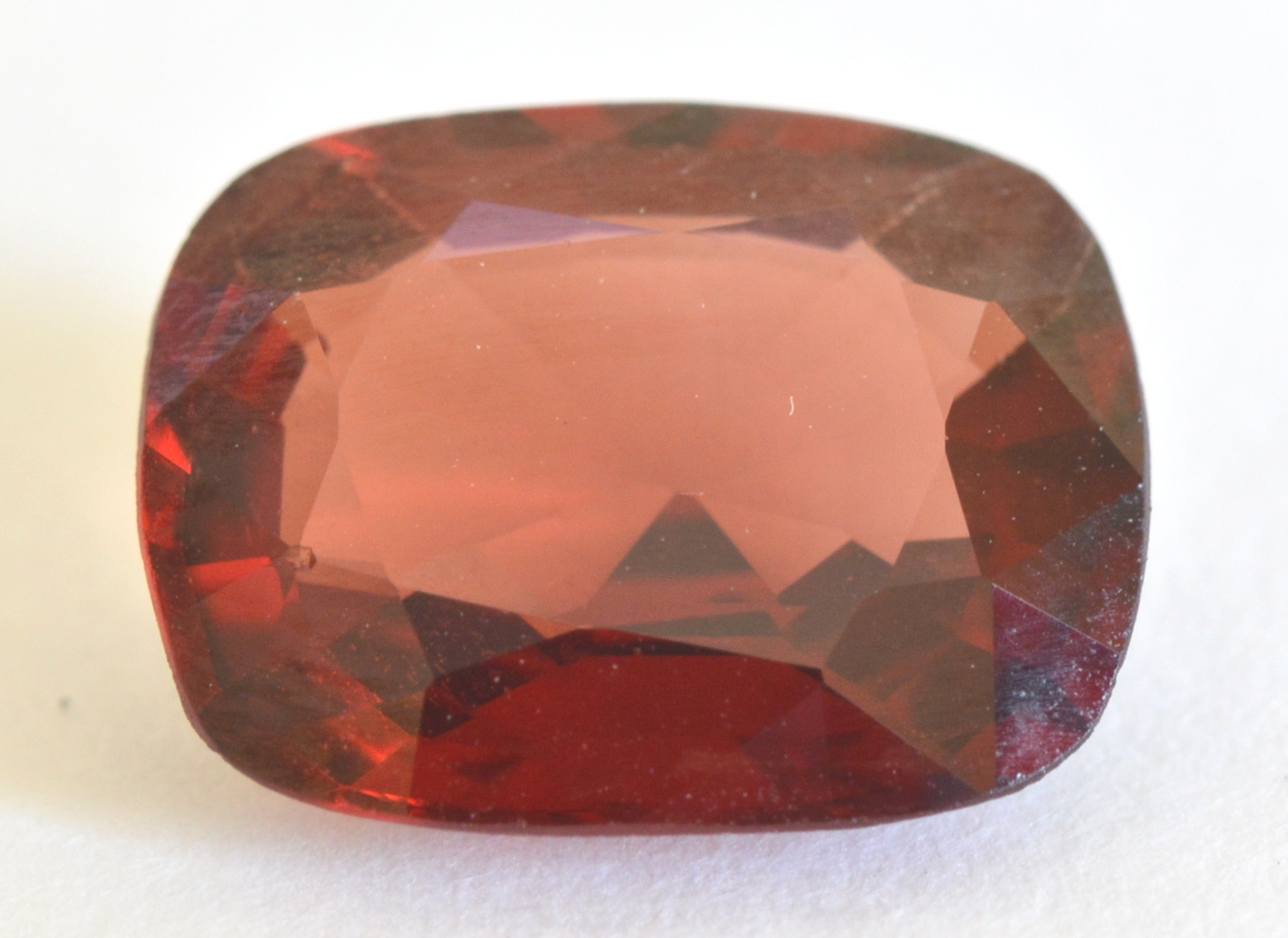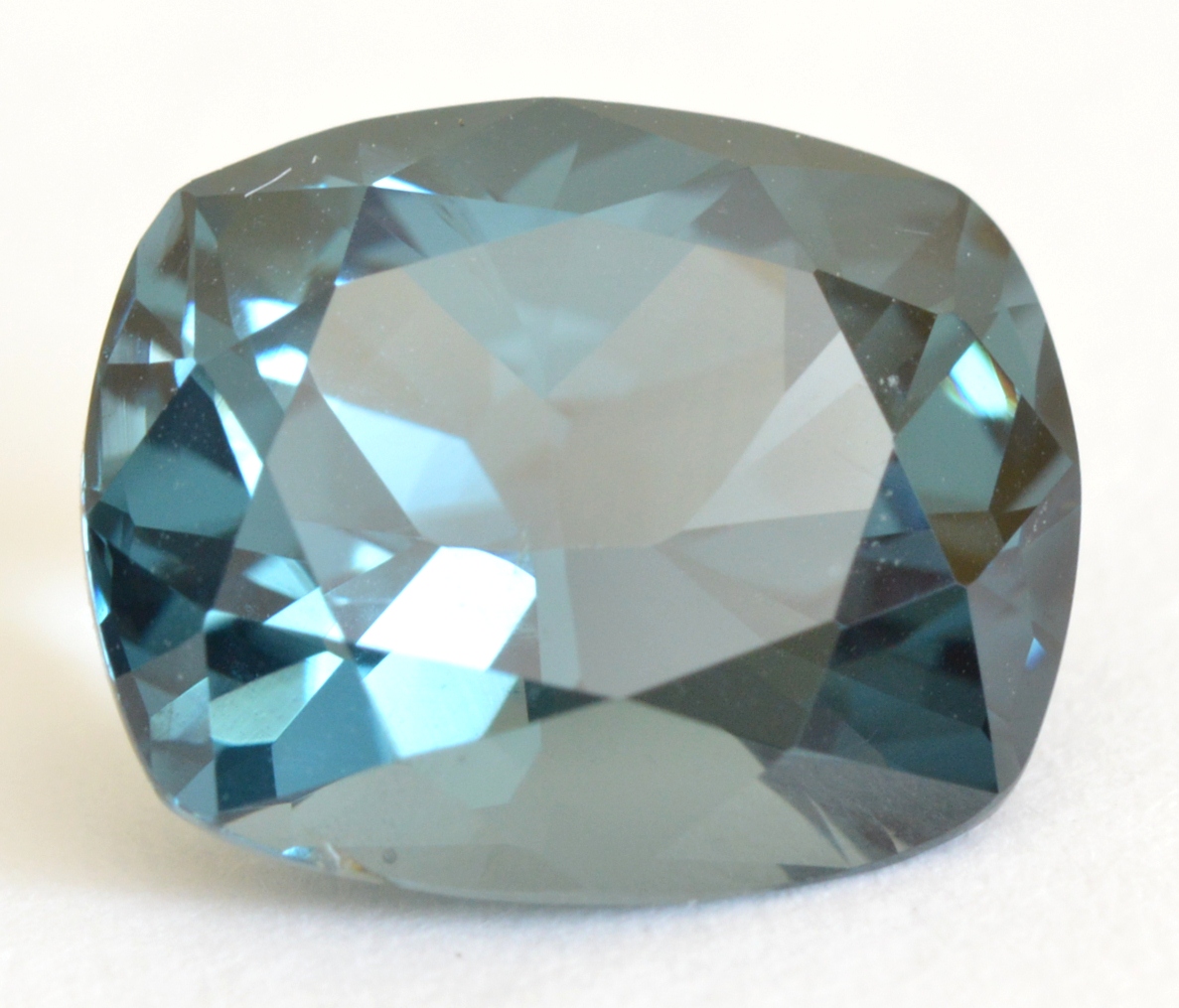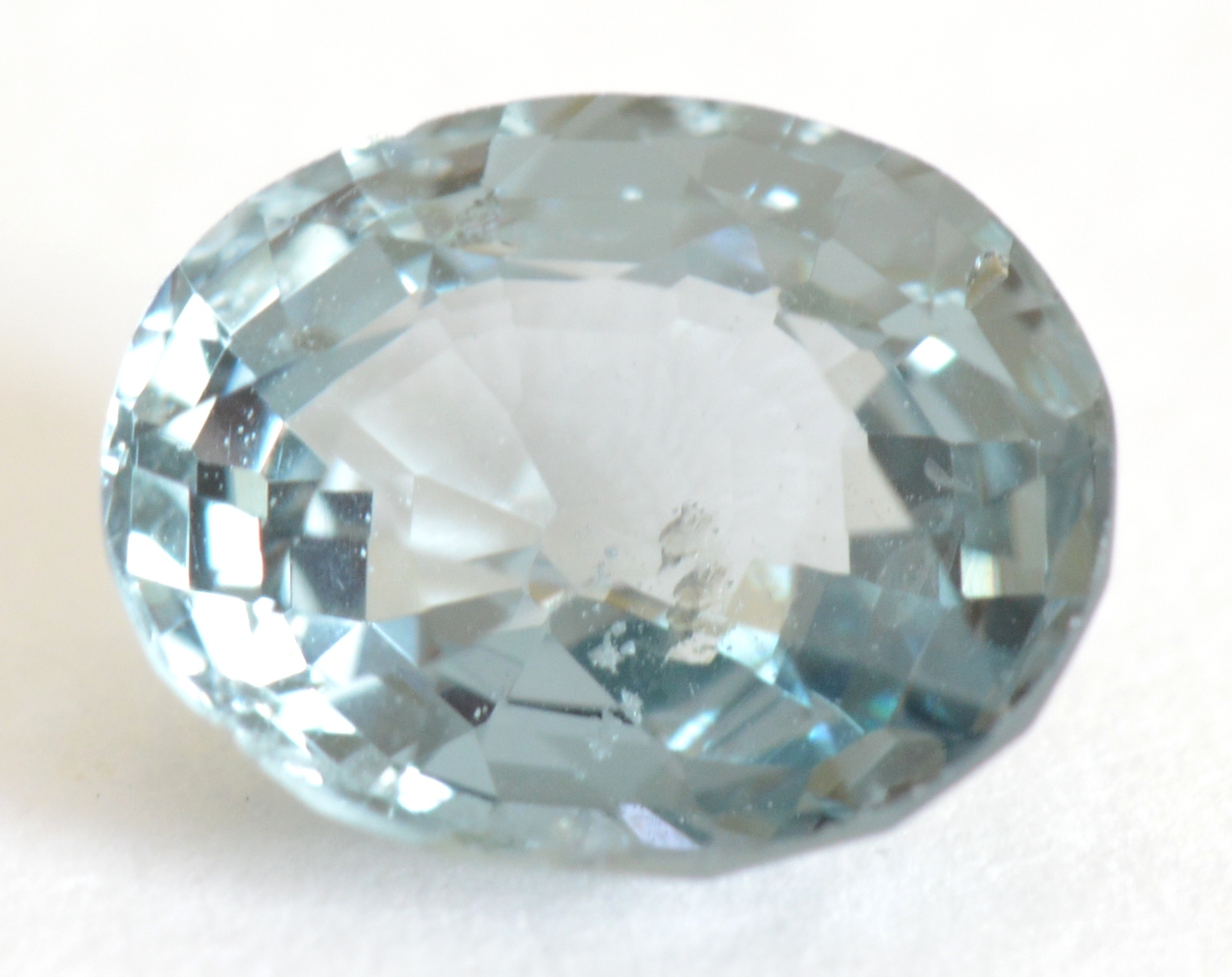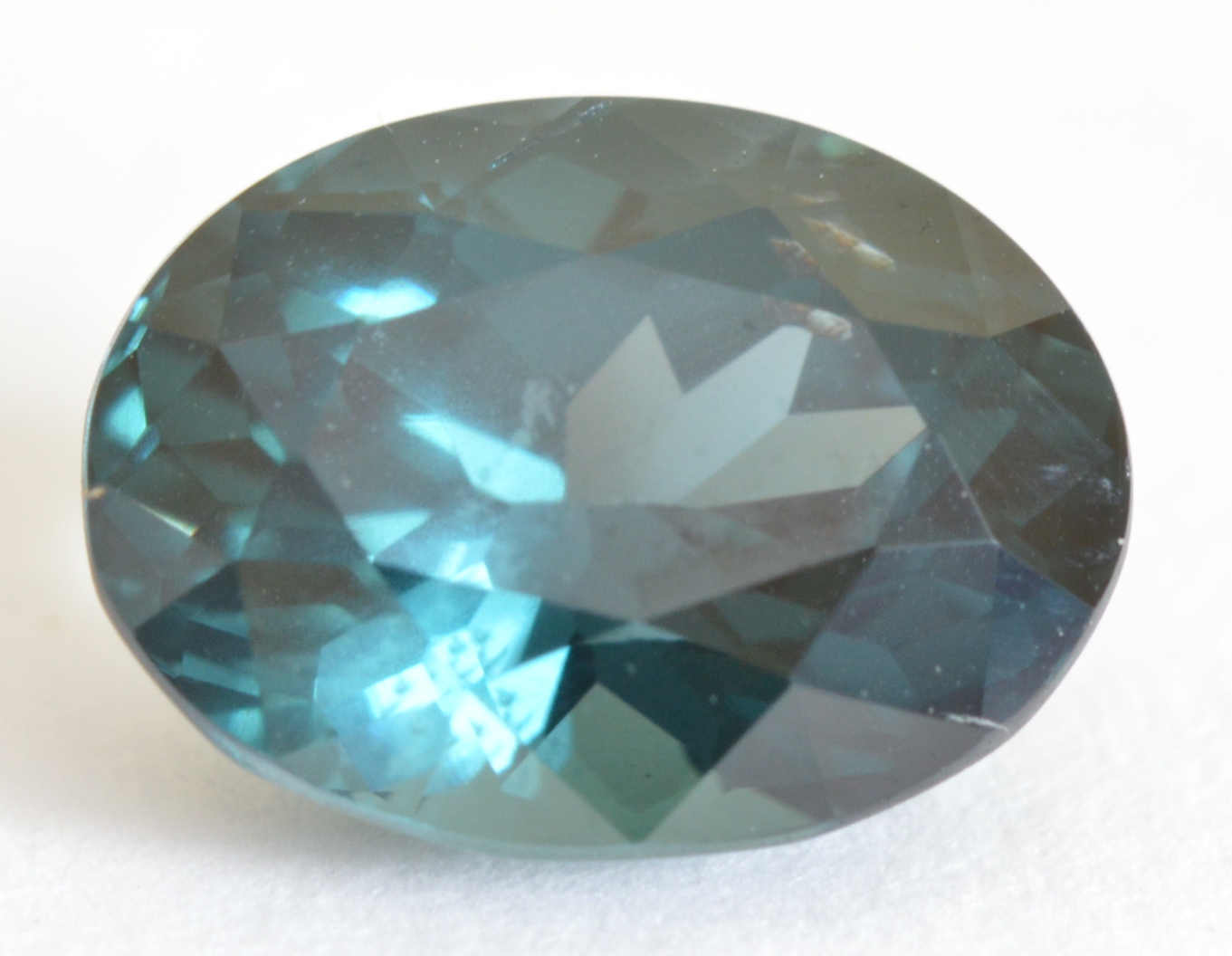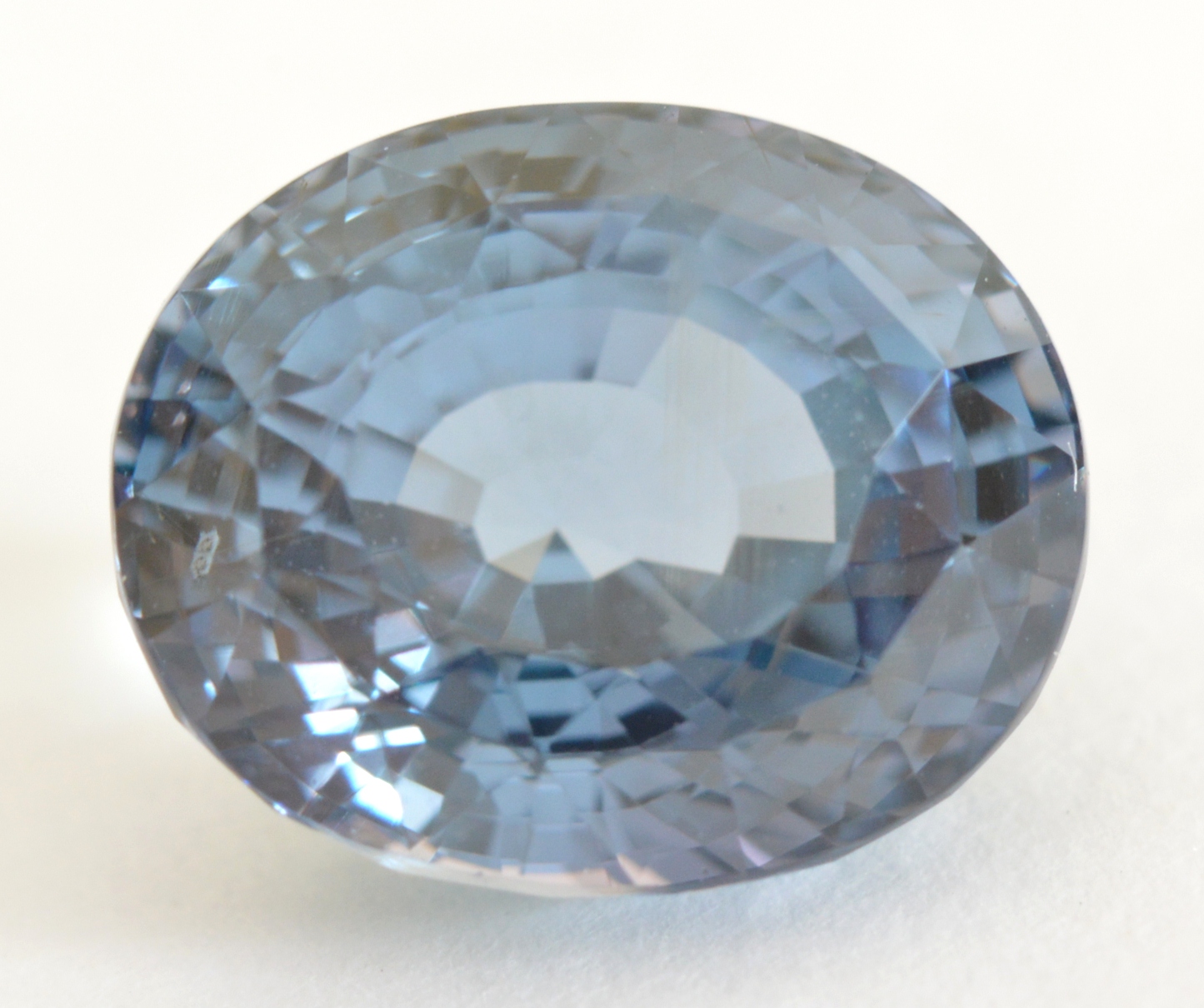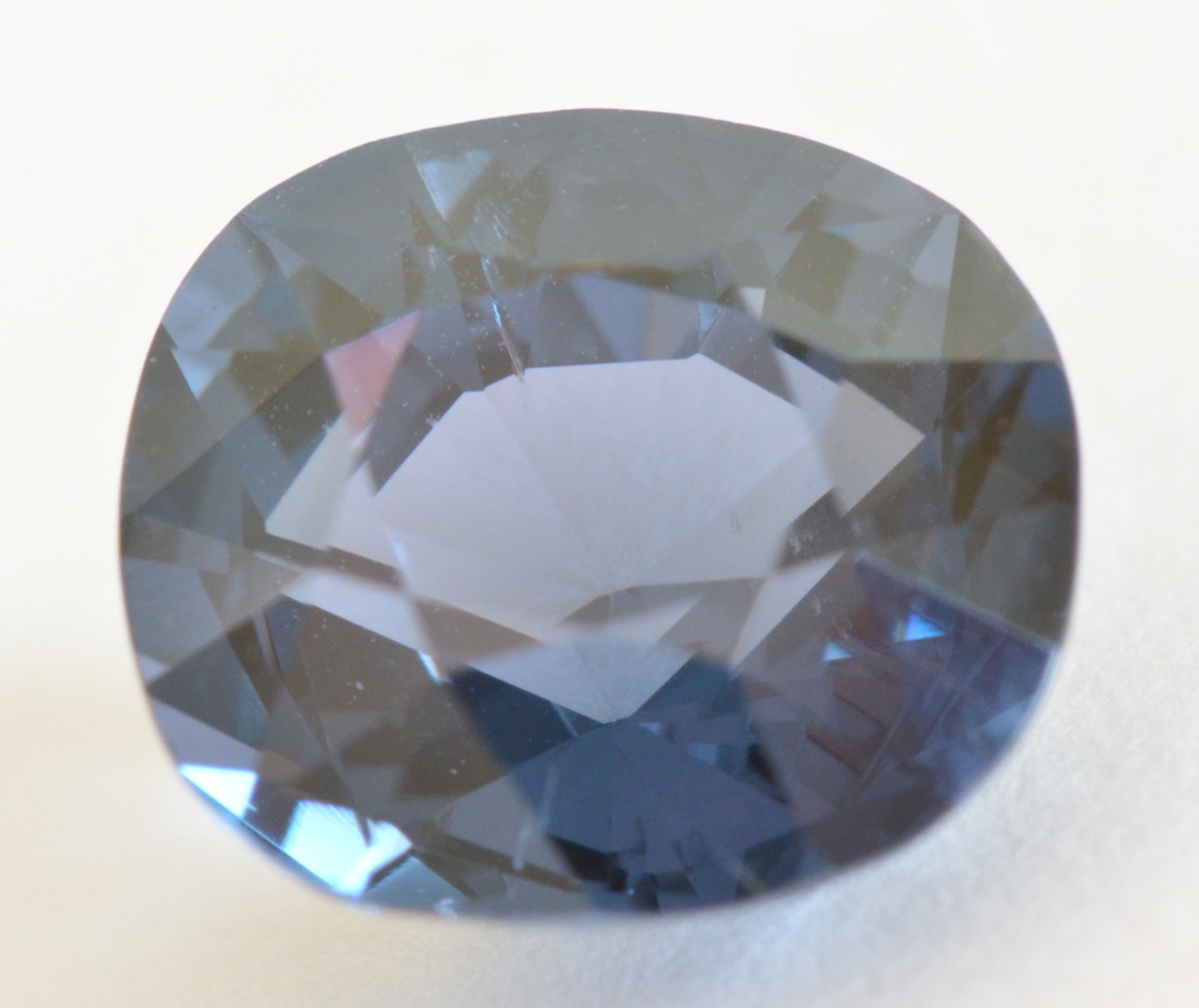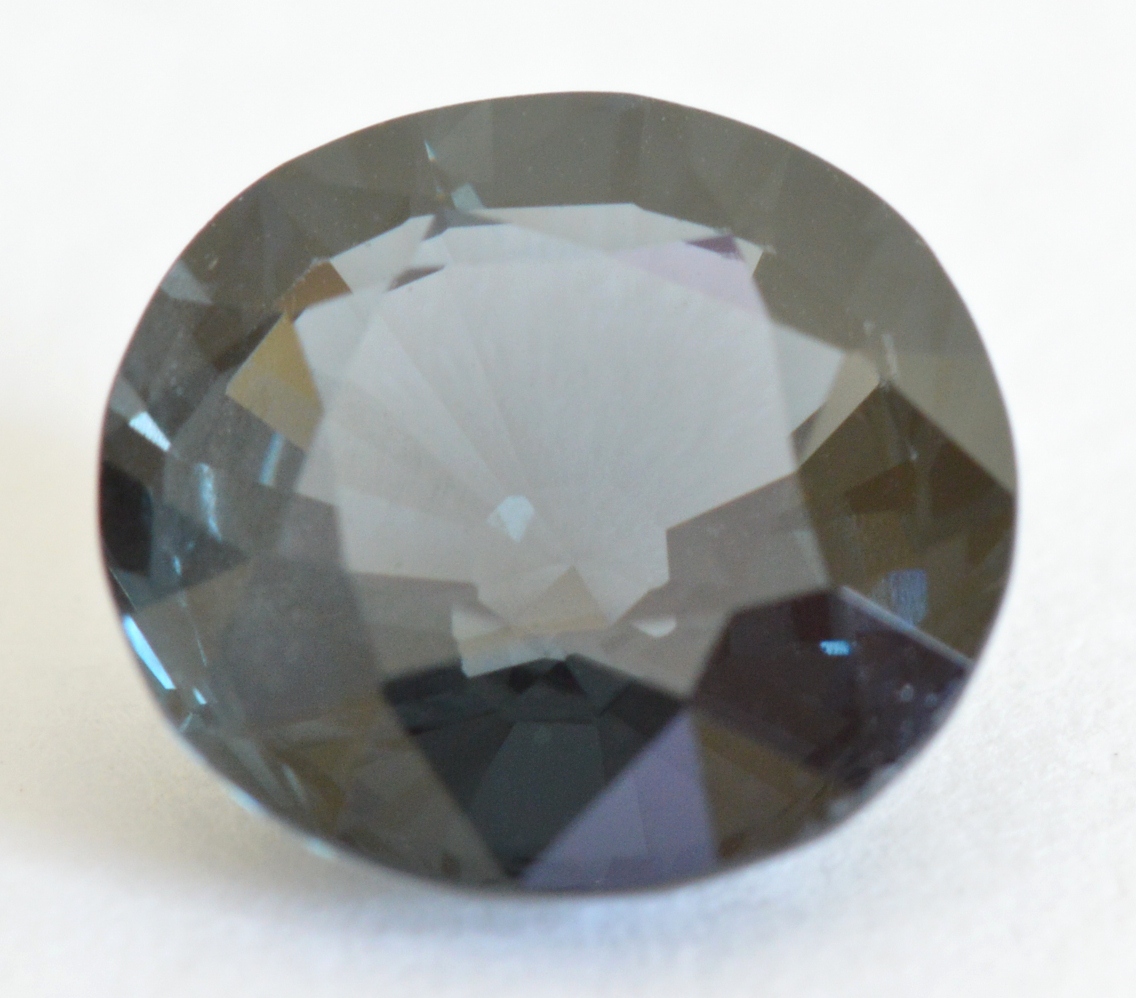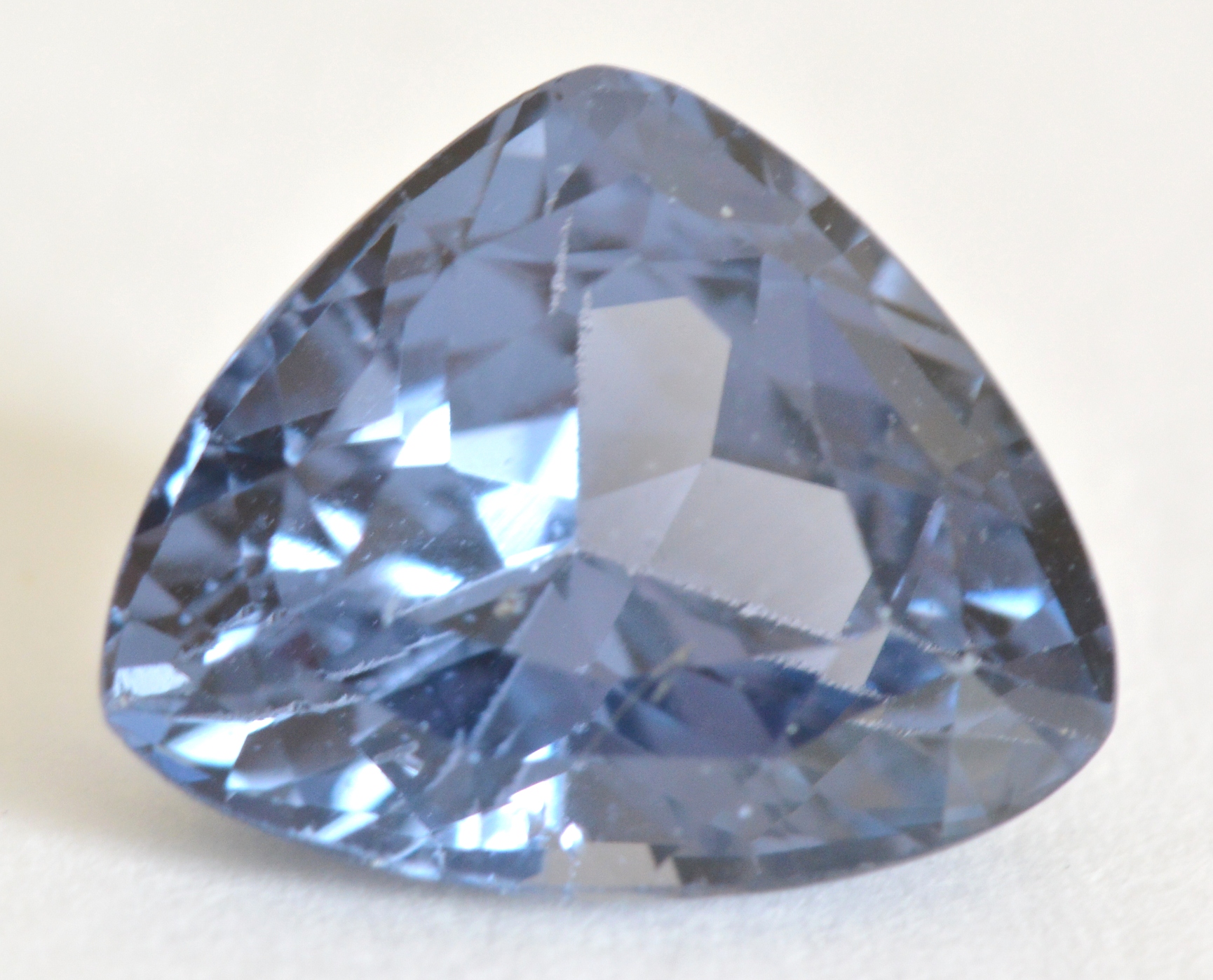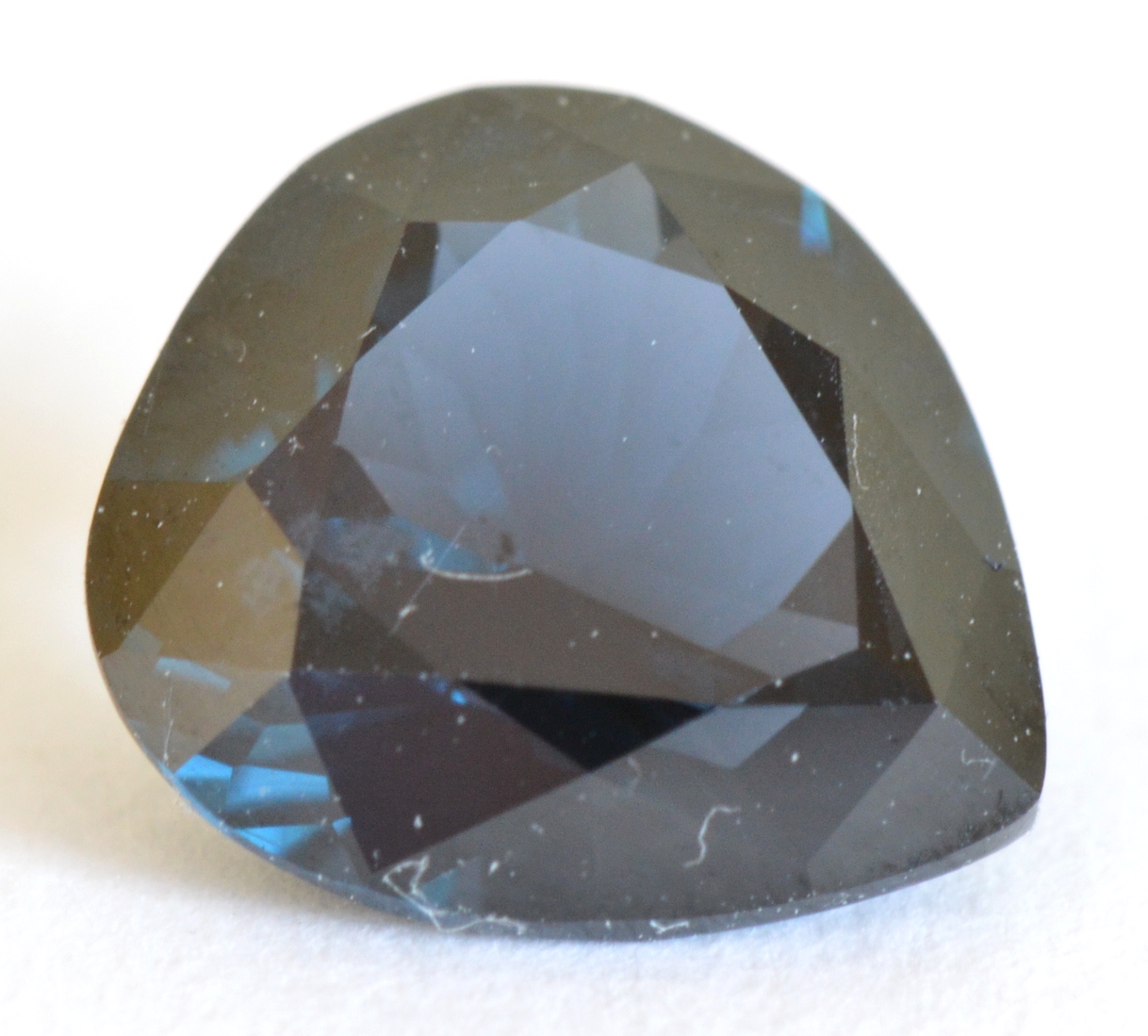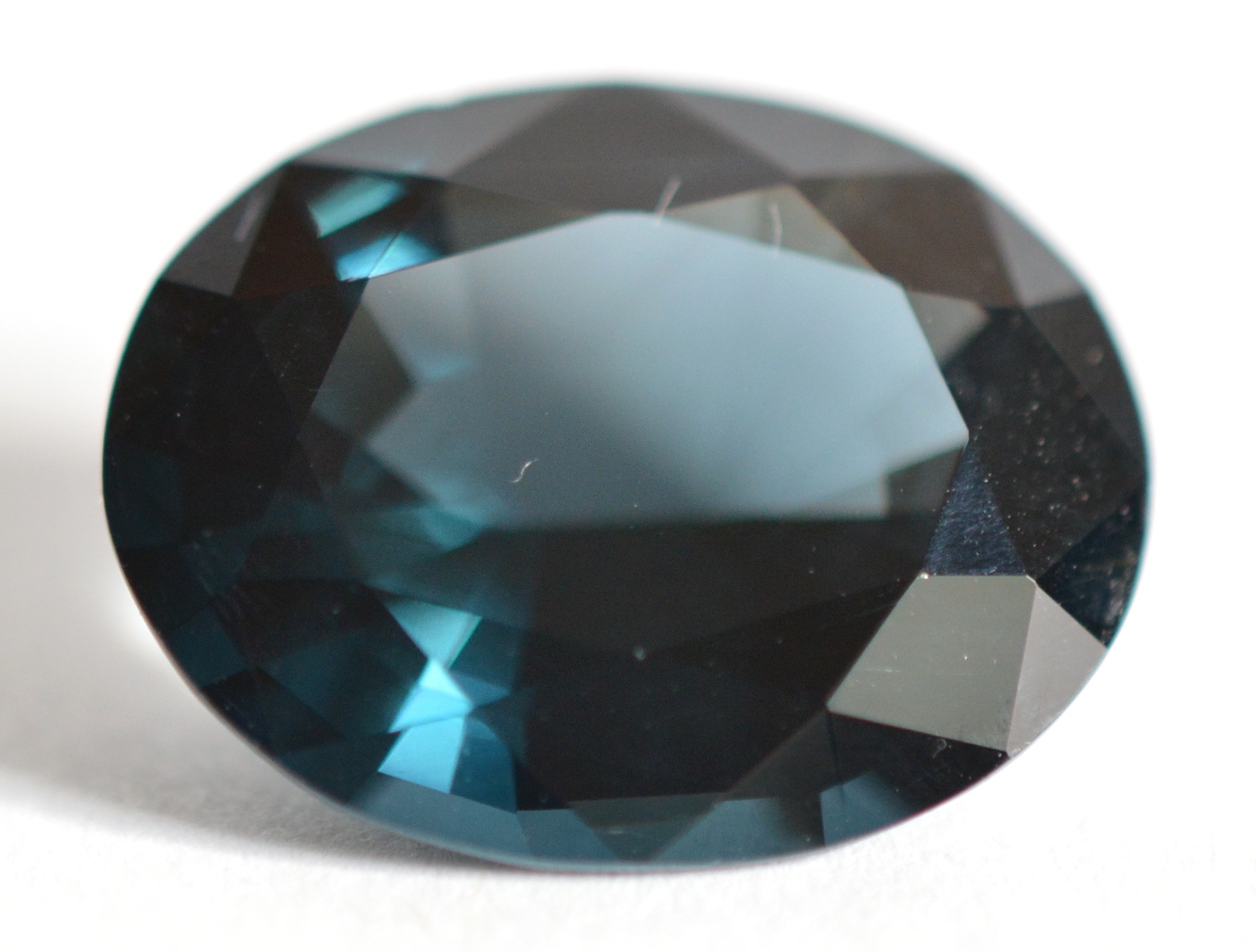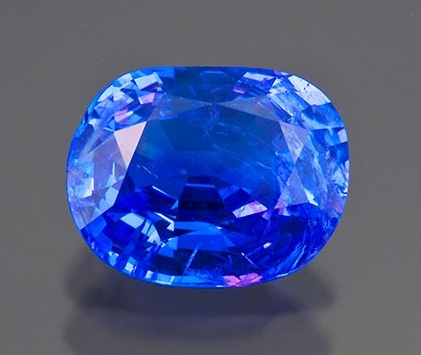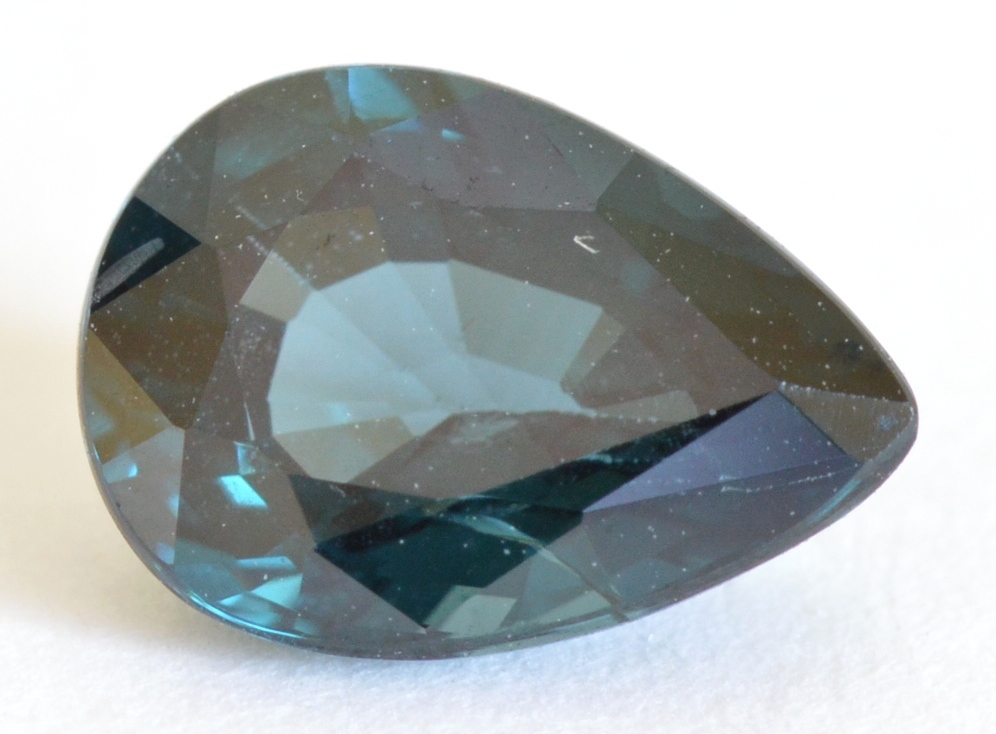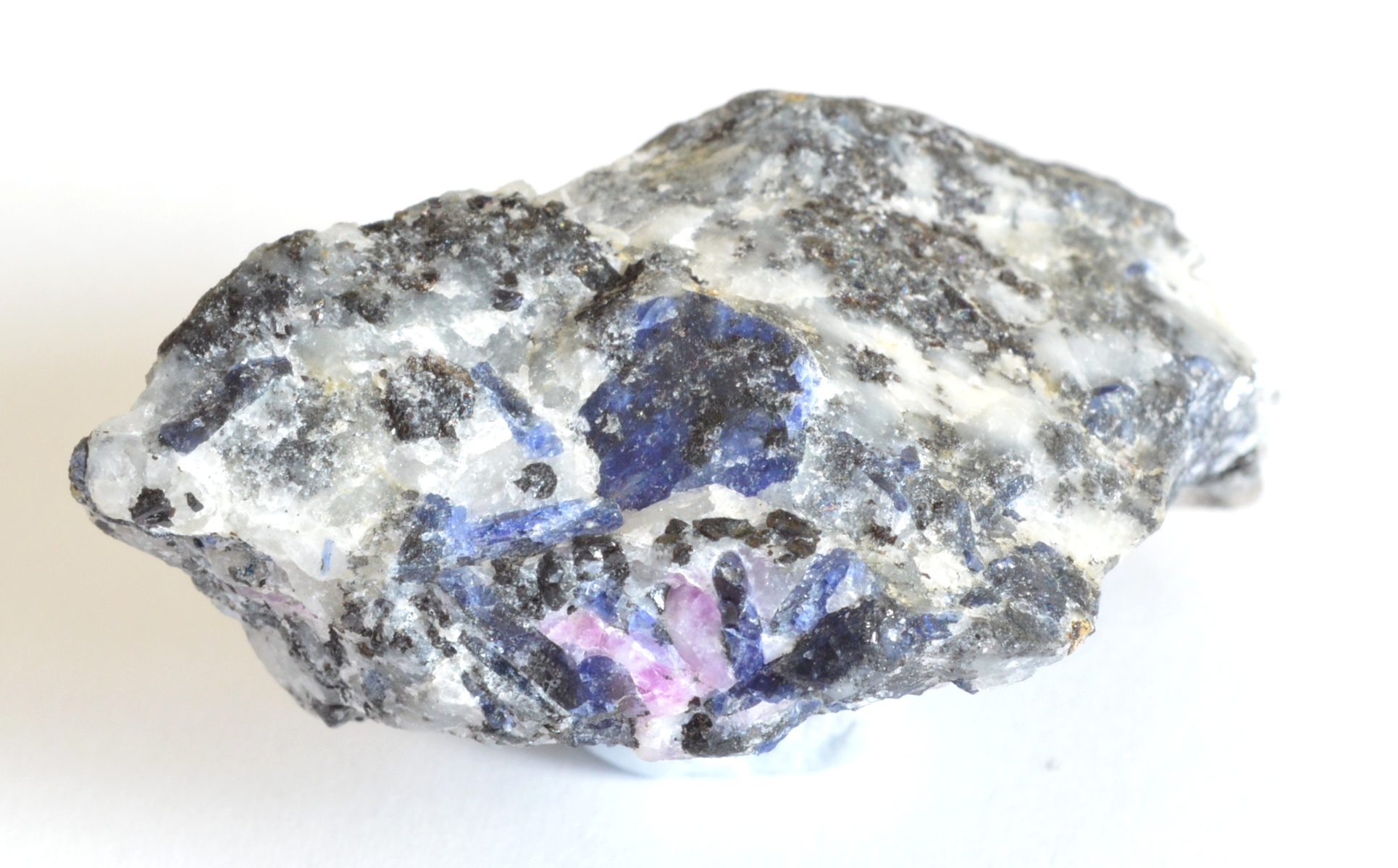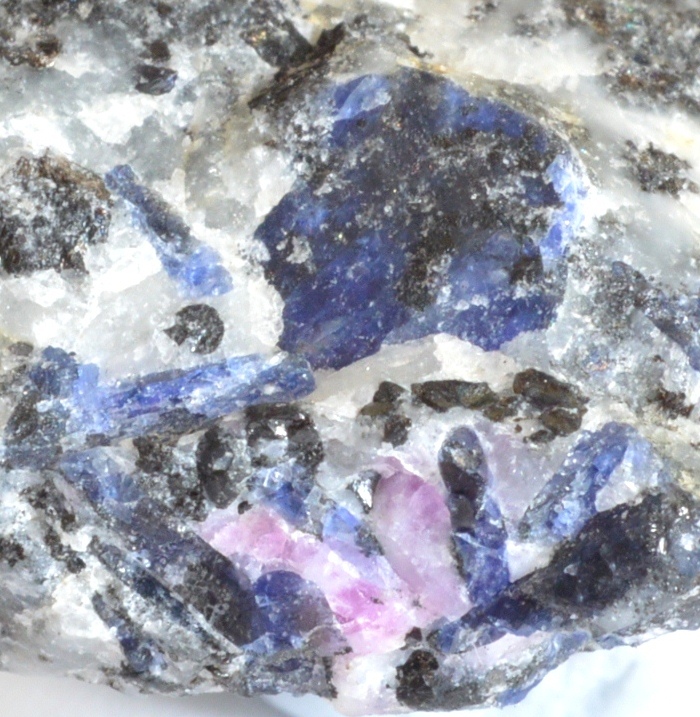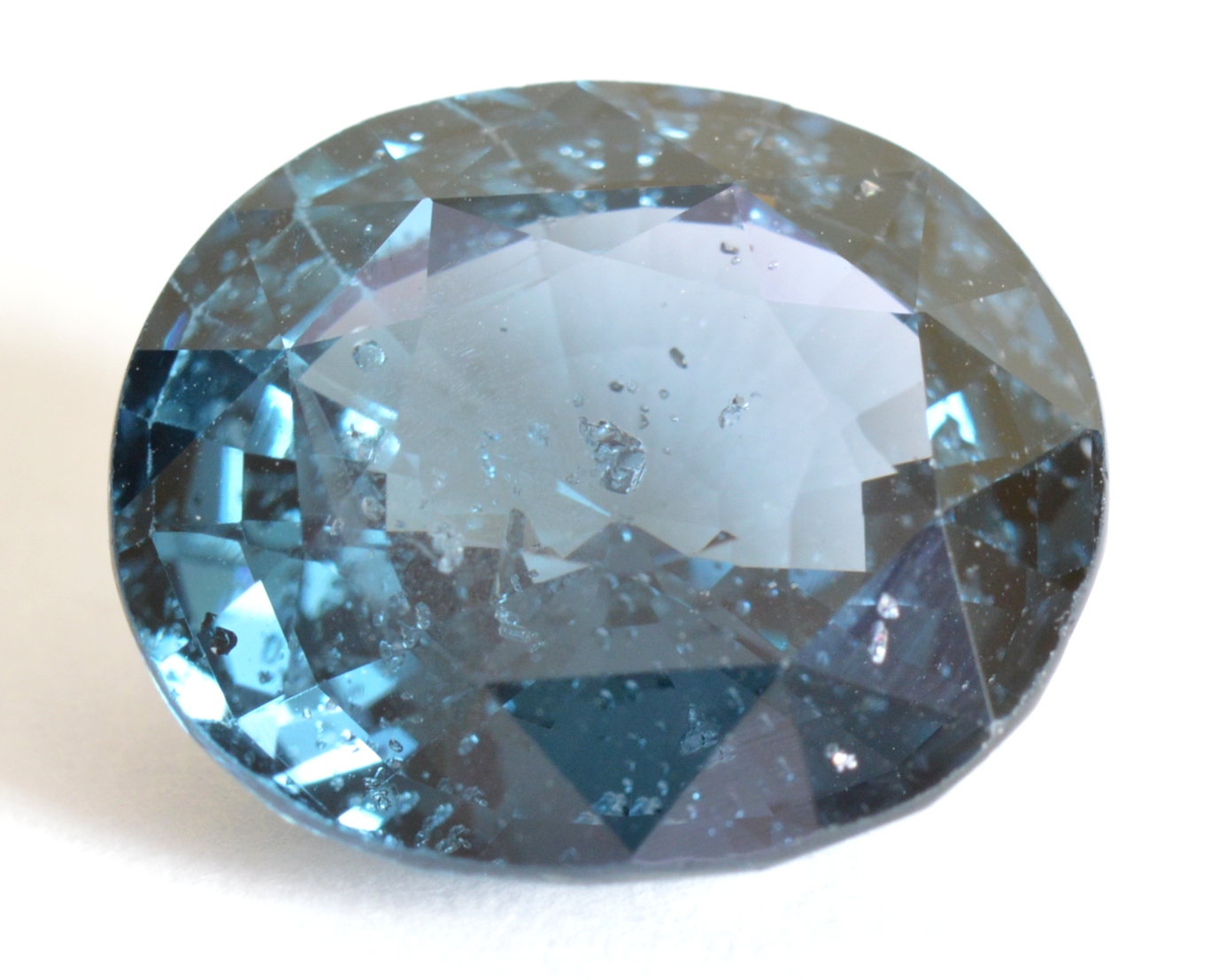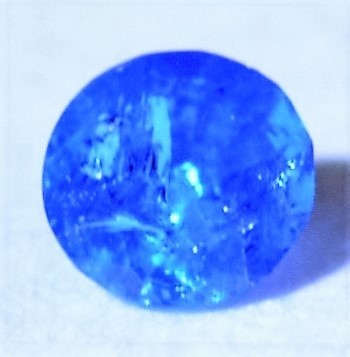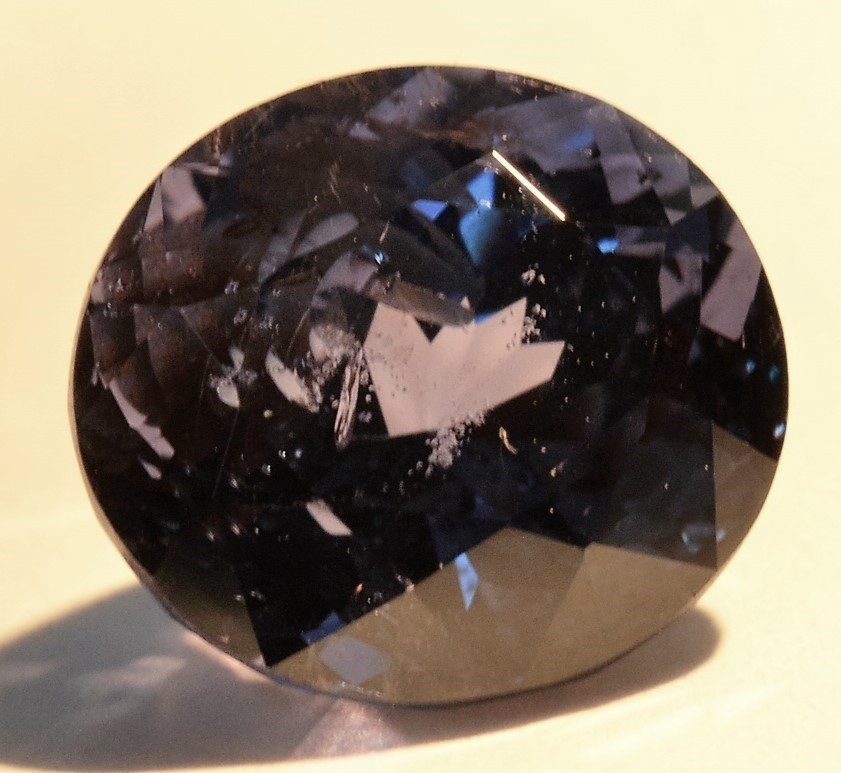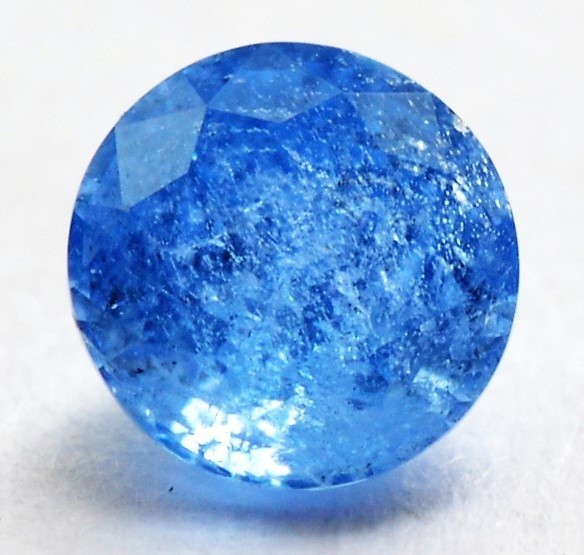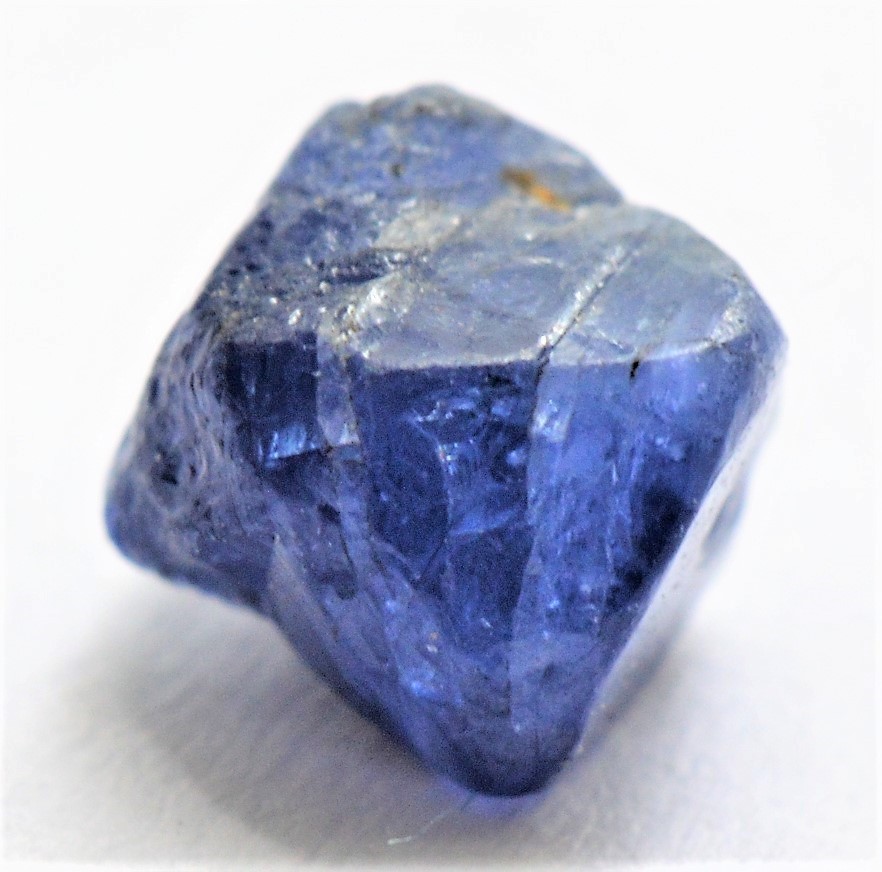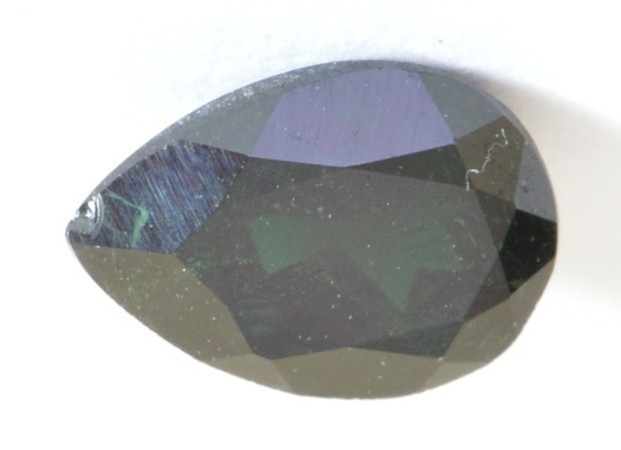Spinel: Color and Magnetism
As with Corundum, the most popular colors of Spinel are red and blue. Although Spinels have been used as gemstones for centuries, they are typically less widely known and prized than Sapphire and Ruby. Like Corundum, Spinel is an oxide. Pure colorless gem Spinel contains 3 chemical elements rather than two: magnesium, aluminum and oxygen, a combination that is diamagnetic.
Natural Blue and Red Spinel
What is Spinel?
The type of Spinel that is fashioned into gemstones is magnesium Spinel, a magnesium aluminum oxide mineral that is singly refractive (isotropic), with a refractive index near 1.72. Gem Spinel is allochromatic, meaning it is colorless when pure (i.e. the magnesium content is unadulterated). Gem Spinel is actually part of a large group of minerals that includes not only transparent Spinel, but also many other mostly opaque idiochromatic Spinel species whose chemistry often blends with gem Spinel in a solid solution series. A few species in the Spinel Group include:
Spinel (magnesium aluminum gem Spinel, MgAl2O4)
Gahnite (zinc aluminum Spinel, ZnAl2O4),
Hercynite (iron aluminum Spinel, FeAl2O4)
Chromite (iron chromium Spinel, FeCr2O4)
Cochromite (cobalt, nickel, iron, chromium, aluminum Spinel, (Co,Ni,Fe) (Cr,Al)2O4)
Magnetite (iron oxide, Fe3O4)
Because all of the above species except magnesium Spinel (gem Spinel) contain high concentrations of transition metals as part of their native chemistry, they have high densities and high refractive indices. The species that contain iron in their native chemistry are highly magnetic. Magnetite is a black opaque Spinel that is ferrimagnetic rather than paramagnetic, and itself acts as a natural magnet. Magnetite may have the highest magnetic susceptibility of any naturally-occurring mineral. All these Spinel species have a cubic crystal structure, and they often form octahedral crystals that grow out of matrix in the shape of a 4-sided pyramid.
Red Spinel Crystals
All blue & red Spinels in our study showed some magnetic attraction, and on average, blue Spinels were twice as magnetic as other colors. A magnetic wand allowed us to easily distinguish natural blue & red Spinels from most synthetic blue & red Spinels, as the synthetics are nearly always diamagnetic.
Transparent gem Spinel is one of the few types of gemstones that is seldom heated, treated or enhanced. However, in recent years heat treatment of pink and red Spinels to improve clarity has been reported, as well as cobalt diffusion of blue Spinels to improve color (Peretti et al., 2015). Treatment remains uncommon.
Magnetite Crystals
Gahnite
Also called Zinc Spinel, Gahnite is another species besides gem Spinel that can be transparent, but Gahnite is an uncommon mineral and rarely seen as a gemstone. Gahnite mixes with gem Spinel in solid solution series, with zinc ions replacing magnesium ions, mostly in very small amounts. The zinc ions do not generate magnetic responses or create color.
Gahnite is an idiochromatic species with a high refractive index (1.79-1.82) due to the high concentration of zinc in its chemical makeup. Cut gems are typically dark green, and can appear black in reflected light. The green color is not due to the transition metal zinc, but instead to iron-iron (Fe2+-Fe3+) charge transfer. Gahnite can be strongly magnetic, but not because of zinc oxide within Gahnite. Zinc oxide is actually diamagnetic. We can deduce that the strong magnetic susceptibility is due to iron content derived from blending with other species within the Spinel group. A faceted green Gahnite Spinel is pictured below in reflected light (left) and in transmitted light (right). Transmitted light more clearly reveals the green body color. This Gahnite shows a Strong response to a magnetic wand.
Gahnite in Transmitted Light
Cause of Magnetism
In most cases, magnetism in natural gem Spinel of any color is due entirely to iron. All natural blue and red Spinels in this study showed some degree of magnetic attraction. Stronger magnetic responses and higher measured magnetic susceptibilities corresponded to higher iron content. In some of the red Spinels we tested, chromium content may possibly be great enough (greater than approx. 0.4%) to contribute a bit to the magnetic responses and measured magnetic susceptibilities. Theoretically, some high-chromium low-iron red Spinels could possibly owe all of their weak magnetic susceptibility to chromium content, but spectrometer analysis indicate that this is not the case in any of the red Spinels tested in our study.
In red Spinels and natural Spinels of any color that show detectable magnetism, analysis with a UV-Vis-NIR spectrometer invariably indicate the presence of iron in addition to cobalt and/or chromium. Cobalt in blue gems is almost certainly in concentrations too low to contribute anything to magnetic susceptibility. However, very low concentrations of cobalt can create blue color in gem Spinel.
Pink Spinel
Purple Spinel
Blue Spinel, Sri Lanka
4.24ct., Weak, SI 61
Red Spinel, Sri Lanka
3.67ct., Weak, SI < 20
Blue Spinel
The primary coloring agents in most blue Spinels are iron (Fe2+ and Fe3+) and cobalt (Co2+). For decades it was thought that iron (Fe2+) created blue color in Spinel along with cobalt, but yet-to-be-published research at GIA by Aaron Palke (2018 GIA International Gemological Symposium) indicates that blue color in blue Spinels is entirely the result of cobalt, while iron modifies blue color by contributing mostly gray and pink color.
Iron is the reason all natural blue Spinels tested in this study showed magnetic attraction. All natural Spinels that had a component of blue color or gray color, including purple and violet Spinels, were also magnetic to some degree. In addition to iron, cobalt is present in all blue Spinels, mostly in trace amounts (<.1% cobalt oxide by weight). The presence of cobalt in the gems we tested was confirmed by spectrometer analysis.
Researchers have shown that these trace amounts of cobalt are enough to contribute to the varying intensities of color in blue Spinels (Shigley & Stockton, 1984), but such low concentrations of cobalt do not contribute to magnetic attraction. Even Cobalt Spinel, which has a higher ratio of cobalt to iron, is unlikely to contain magnetically detectable concentrations of cobalt, and any magnetic susceptibility would be due to iron. Cobalt Spinel is discussed separately below.
The color saturation of blue Spinels varies from light to dark, and color varies from gray-blue to green-blue to pure blue. All light blue Spinels in this study (like the one pictured below left) were weakly magnetic (SI 35-69) due to lower concentrations of iron. Gray tones, which are common in blue Spinels (shown below right) and Spinels of other colors, are the result of iron (Chauvire et al., 2015).
Light Blue Spinel, Sri Lanka
1.95ct., Weak, SI 35
Light Gray-Blue Spinel
1.49ct., Weak, SI 42
Darker blue color does not necessarily correspond to greater magnetic susceptibility, as illustrated by the blue Spinels compared above and below, all weakly magnetic. The two gems of each pair have similar magnetic susceptibilities, but the gems on the right (above right and below right) are significantly darker. In these cases, darker blue color might be the result of higher concentrations of cobalt, or to iron-to-iron (Fe2+-Fe3+) intervalence charge transfer, neither of which would contribute to magnetic susceptibility. Iron-iron charge transfer may add a green component to blue color (as seen in the gem below right).
Medium Blue Spinel, Burma
3.79ct., Weak, SI 74
Dark Green-Blue Spinel, Sri Lanka
2.49ct., Weak, SI 69
Increasing concentrations of both ferric iron (Fe3+) and ferrous iron (Fe2+) results in stronger magnetism. The purer-blue Spinel shown below (left) has 3 times the magnetic susceptibility as the gray-blue gem (right), an indication that increased gray color from iron does not necessarily correspond to greater magnetic susceptibility as might be expected. The blue gem on the left has higher total iron content, and the stronger blue color suggests higher cobalt content.
Medium Blue Spinel, Sri Lanka
2.66ct., Strong, SI 187
Dark Gray-Blue Spinel, Sri Lanka
2.92ct, Weak, SI 61
The violet-blue Spinel gem below was sold as a Cobalt Spinel. Cobalt is apparent as red color under a Chelsea filter, indicating low iron content, but this gem lacks the bright blue color distinctive of Cobalt Spinel. Cobalt is also detectable with a spectrometer, as well as iron, which modifies the blue color.
Violet Blue Spinel, Sri Lanka
4.08ct., Moderate, SI 87
All blue Spinels in this study that were strongly magnetic also had dark color saturation. None were light blue. But as already mentioned, not all dark blue gems are strongly magnetic. Iron to iron (Fe2+-Fe3+) charge transfer and/or cobalt can darken a gem without increasing magnetic susceptibility.
The over-dark pure blue gem shown below had by far the highest magnetic susceptibility of any Spinel tested. This Spinel showed a Drag response (SI 360), presumably due to an unusually high concentration of both ferric iron (Fe3+) and ferrous iron (Fe2+).
This anomalous Spinel was sold incorrectly as a Gahnospinel, which has a composition intermediate between zinc Spinel (Gahnite) and magnesium Spinel. However, the refractive index of 1.722 identifies this gem as magnesium Spinel. Darker blue color in Spinel may or may not be accompanied by increasing concentrations of cobalt. Cobalt levels are difficult to assess with a spectrometer. Similarly, Chelsea filter and UV fluorescence as the indications of cobalt are almost entirely masked or inhibited by iron in all blue Spinels other than Cobalt Spinels.
Very Dark Blue Spinel, Sri Lanka
1.76ct., Drags, SI 360
Natural or Synthetic?
Any magnetic attraction in blue Spinel is generally diagnostic for natural origin (as opposed to synthetic origin). Most blue synthetic gems found in the marketplace are produced by the flame fusion process, and they are colored by just a trace amount of cobalt that is sufficient to create strong blue color. This small amount of cobalt is magnetically undetectable, as it is in natural blue Spinels. Iron is not used as a dopant (coloring agent) in synthetic blue Spinels. Natural blue Spinels all contain magnetically detectable iron.
As an example, the unusually large size (10.87ct.) of the dark blue Spinel pictured below makes us suspect that it could be lab-grown. Additionally, microscopic examination reveals no definitive natural inclusions. How can we determine whether it is synthetic or natural? Magnetic testing with floatation reveals that the gem is moderately magnetic, something we never encounter in synthetic blue Spinels made by flame fusion. This simple test tells us the gem is natural. Iron can also be detected in this gem with a spectrometer, confirming its natural origin.
Had this dark blue gem been synthetic, a cobalt spectrum would have been visible, even with a hand-held spectroscope. Synthetic blue Spinels are also easily distinguished by pink fluorescence under long wave UV light due to cobalt in the absence of iron. Iron in natural Spinel quenches any fluorescence. Due to higher aluminum content, most synthetic Spinels (flame fusion type) also have a slightly higher refractive index (approx. 1.73) than natural Spinels (approx. 1.72). Flux-grown synthetic Spinels are discussed on page 3 of this section.
Natural Dark Blue Spinel, Sri Lanka
10.87ct., Moderate, SI 95
Cobalt Spinel
Cobalt Spinels are rare, and most blue Spinels that are marketed as Cobalt Spinels or as “cobalt blue” Spinels are actually typical blue Spinels with color modfied by iron. When cobalt ions replace magnesium ions in Spinel, they produce only pure blue color rather than gray-blue or green-blue. Depending on the concentration of cobalt, color saturation can theoretically range from light blue to vivid blue. No color grading parameters have been established to identify Cobalt Spinel, and no exact ratio of iron to cobalt has been established. Palke suggests that besides vivid blue color, true Cobalt Spinels under 1 ct would have at least 50 ppm cobalt, and be relatively low in iron.
Pure blue color in a natural Spinel is a sure sign that the gem is a genuine Cobalt Spinel. But whether iron or cobalt is the dominant chromophore may not always be obvious simply by looking at the color, or by checking the absorption spectrum with a hand-held spectroscope. Analysis with a spectrometer is a better means to determine whether or not cobalt is primarily responsible for the color. Cobalt shows different absorption features on a spectrometer graph than does iron.
High cobalt content also causes Spinel to appear bright pink under a Chelsea filter, or even bright red when the concentration of cobalt is sufficiently high and iron levels are low. Cobalt Spinels also fluoresce pink or red under long wave UV light. The body color in the vivid pure blue Spinel pictured below is a clear indication that cobalt is the primary coloring agent. Such vivid cobalt color suggests low iron content and low magnetic susceptibility. Unfortunately, the rare gem pictured below is not one of our study samples.
Cobalt Spinel, 2.59ct., Viet Nam
Photo Courtesy of Palagems.com
Several Cobalt Spinels from Luc Yen, Viet Nam were tested in our study, including a number or rough crystals. The vivid blue Cobalt Spinel on the left is colored predominantly by cobalt, but iron is also detectable with a spectrometer. This Cobalt Spinel is weakly magnetic (SI 55). This gem glows bright pink under a Chelsea filter, and fluoresces a strong pink under long wave UV light, both due to cobalt and also possibly to chromium if chromium is present in sufficient concentration. The less saturated blue color of the Cobalt Spinel on the right is less fluorescent and slightly more magnetic (SI 73), suggesting a lower ratio of cobalt to iron.
Cobalt Spinel, Viet Nam
0.25ct, Weak, SI 73
Cobalt Spinel, Viet Nam
0.03ct., Weak, SI 55
Cobalt oxide is equally as magnetic as iron oxide, but much less cobalt than iron is needed to produce blue color. Cobalt concentrations in Spinel are measured in parts per million. We suspect that the small amount of cobalt in the examples above is not detectable with a magnetic wand even when the sensitive floatation method is used, and the cobalt content is almost certainly too low to be measurable with a Hoover balance (SI < 20). Any measurable magnetic susceptibility in Cobalt Spinel is likely due entirely to iron.
Treated natural Spinel gems that have been diffused on the surface with cobalt have pure blue color and can look similar to genuine Cobalt Spinel. And like genuine Cobalt Spinel, cobalt-diffused Spinel gems appear red under a Chelsea filter and fluoresce red under longwave UV light. They also show a pronounced cobalt spectrum under a spectroscope. The gem shown below is weakly magnetic, most likely due to natural iron, as the amount of cobalt used in diffusion is very small.
1 >
© Kirk Feral 2015, All Rights Reserved. These materials may be duplicated for educational purposes only. No part of this website may be duplicated or distributed for profit, for commercial purposes, or for posting to another website without the expressed written consent of the copyright holder.
Dark Blue Spinel
1.44ct, Strong, SI 152
All color and magnetism in natural gem Spinel is derived from the non-gem Spinel species that are in solid solution series with it. In other words, color and magnetic susceptibility are due to a small degree of inter-species mixing. For example, iron can mix into gem Spinel to create gray and pink colors when colorless magnesium ions are partly substituted by iron ions derived from Hercynite Spinel. Chromium ions from Chromite Spinel can substitute for aluminum ions in gem Spinel to produce red color. Cobalt ions from Cochromite can substitute for magnesium ions in gem Spinel to create blue color.
This exchange of these chromophores within Spinel minerals is illustrated by the Hercynite mineral specimen pictured below. This specimen has 4 colors, and appears to be a mixture of several Spinel species besides Hercynite. In addition to the dominant black color from iron (Hercynite), we can see pink color from chromium (Chromite) and blue color from cobalt (Cochromite). The white color is likely marble matrix.
Causes of Color
In gem Spinel (species Spinel), the complete story of color is complex, and even though researchers have studied the subject for years, some questions remain. Fundamentally, Spinel color involves 3 transition metals: iron, chromium and cobalt. Vanadium is also believed to play a role in color. These metal ions replace the colorless magnesium ions in gem Spinel. Iron creates gray, pink and purple colors, and iron is the source of the gray "mask" that is ubiquitous in Spinel gems. Cobalt creates only blue color, and is now thought to be the sole source of blue color in Spinel. When chromium ions replace the aluminum ions in Spinel, red and pink color is produced. Combinations of these 3 metals in varying ratios and concentrations produces non-primary colors such as purple and orange. Intervalence charge transfer between ferrous iron (Fe2+) and ferric iron (Fe3+) contributes green color (D'Ippolito et al., 2015), although Spinels with green as the primary body color are very rare. Natural yellow Spinel is extremely rare and has only recently been discovered.
Hercynite Specimen, Eifel, Germany
with Iron, Chromium and Cobalt
Magnified Image
Blue Spinel
The unusual dark blue Spinel of unknown origin shown below is an unusual Color Change Spinel, changing from blue in daylight to purple in incandescent light. According to unpublished research by Dr. Aaron Palke, trivalent iron (Fe3+) is likely responsible for the color change. Fe3+ absorbs light in the green region of the light spectrum, splitting light transmission between the blue and red regions. Spectrometer analysis and magnetic susceptibility shows that this gem has high iron content. The magnetic susceptibility (SI 200) is one of the highest we recorded for blue Spinel.
Color Change Spinel with Cobalt
Daylight & Incandescent Light
4.78ct, Strong, SI 200
The two rough Spinel crystals pictured below are also Cobalt Spinels from Viet Nam. The crystal on the left is weakly magnetic and fluoresces bright red, suggesting high cobalt content, and possibly some chromium content. The slight purplish tone could be due to a bit of chromium (red) mixing with the cobalt (blue), although this is difficult to determine for sure even with a spectrometer. The blue octahedron on the right fluoresces pink rather than red, suggesting less cobalt or chromium than the crystal on the left, and this octahedron is a little more magnetic, suggesting more iron.
Cobalt Spinel Rough, Viet Nam
0.1ct, Weak
Cobalt Spinel Rough, Viet Nam
0.25ct, Weak
Contents of this Section:
Pg. 1) Overview, Blue Spinel, Cobalt Spinel
Cobalt-Diffused Spinel
0.94ct, Weak
In rare cases, Gahnite can have blue body color due to cobalt. Blue Gahnite crystals colored by iron and cobalt have been found in Nigeria. As a result of its light weigh, the blue Gahnite Spinel pictured below is able to show a Drag response on a dry surface rather than just a Strong response when floated. The magnetic susceptibility is likely due entirely to iron. The cobalt exists only in trace amounts, and the zinc is diamagnetic.
Intermediate in composition between Spinel and Gahnite is the rare dark blue Spinel called Gahnospinel. Because zinc raises refractive index, Gahnospinel is easily distinguished from the more common blue Spinel gems by its higher refractive index (1.735-1.79). Most dark blue gem Spinels seen in the marketplace are not Gahnospinels. In rare instances, Spinels with light blue color can also contain a high enough concentration of Gahnite (high in Zinc) to qualify as Gahnospinels. No Gahnospinels were tested in this study.
Ghanite in Transmitted Light
Gahnite, 0.57ct, Brazil, RI 1.795
Strong, SI 218, Reflected Light
Gahnite, 0.43ct, Nigeria, RI 1.791
Drags, SI 236
Magnetism in Gemstones
An Effective Tool and Method for Gem Identification
© Kirk Feral
The magnetic responses of colored Spinels vary widely, but the majority of gems are weakly to moderately magnetic. We studied magnetism in 117 natural Spinel gems in a range of colors: gray, green, blue, violet, purple, pink, orange & red. Most of the Spinels originated from the established mining areas of Sri Lanka and Burma, but a few originated from less common localities: Tanzania, Viet Nam and Tajikistan.

